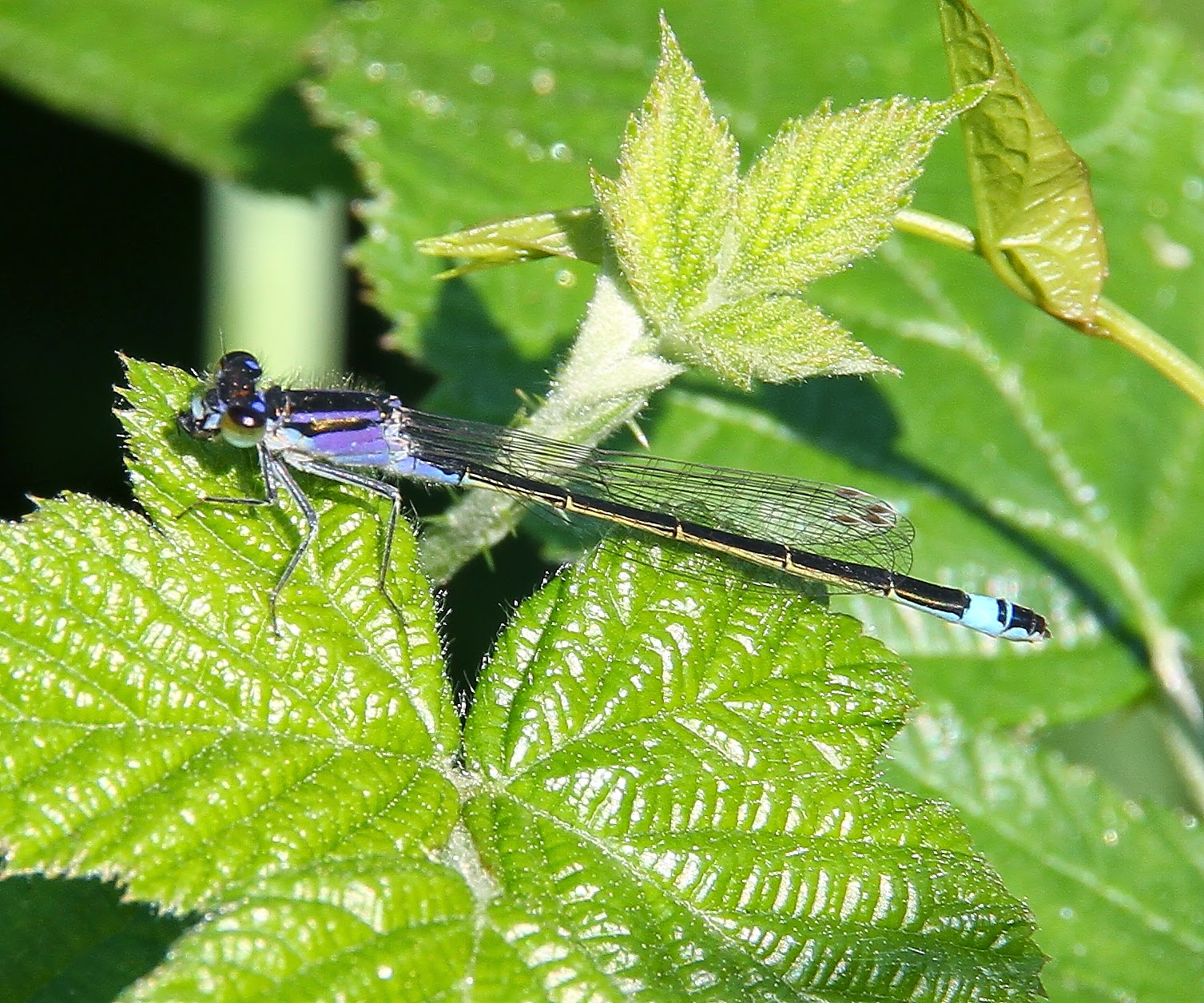In most walks of life, you wouldn't expect to meet an Emperor. However, if you are into Dragonflies, then this is more likely. Emperor Dragonflies are one of the largest of the UK Dragonflies & are fairly easy to see in Dorset at the moment. However, being able to see them & being able to get a good photograph are two different things. I saw my first Emperor Dragonflies for the year flying at the RSPB Arne reserve on the 8 June. They spend a large part of the day constantly patrolling over ponds & I was unable to get any decent flight shots. Fortunately, an egg laying female that day, was more obliging. Today I was out at Swineham, one of my local Poole Harbour patches, & came across this female Emperor Dragonfly sunbathing.
There were good numbers of Common Blue Damselflies nearby along with a few Blue-tailed Damselflies.
It was an uninspiring day for seeing birds and this Song Thrush was the only bird photographed.
There were good numbers of Common Blue Damselflies nearby along with a few Blue-tailed Damselflies.
Blue-tailed Damselfly: Female. They can be separated from the similar looking Scarce Blue-tailed Damselflies by having the final 2 segments of the abdomen black with segment 8 blue, whereas, SBTD have the far edge of segment 8 and all of segment 9 blue. SBTD are also far less common in Dorset compared to this widespread Damselfly
Common Blue Damselfly: Male
Common Blue Damselfly: Male. The all important Segment 2 markings with the black head & shoulders marking. See Photos of the segment 2 markings on the other Dorset Blue Damselflies
Brown China-mark: This is a fairly common waterside Moth, but from an unusual group as the caterpillars are entirely aquatic and feed on water plants
Song Thrush






